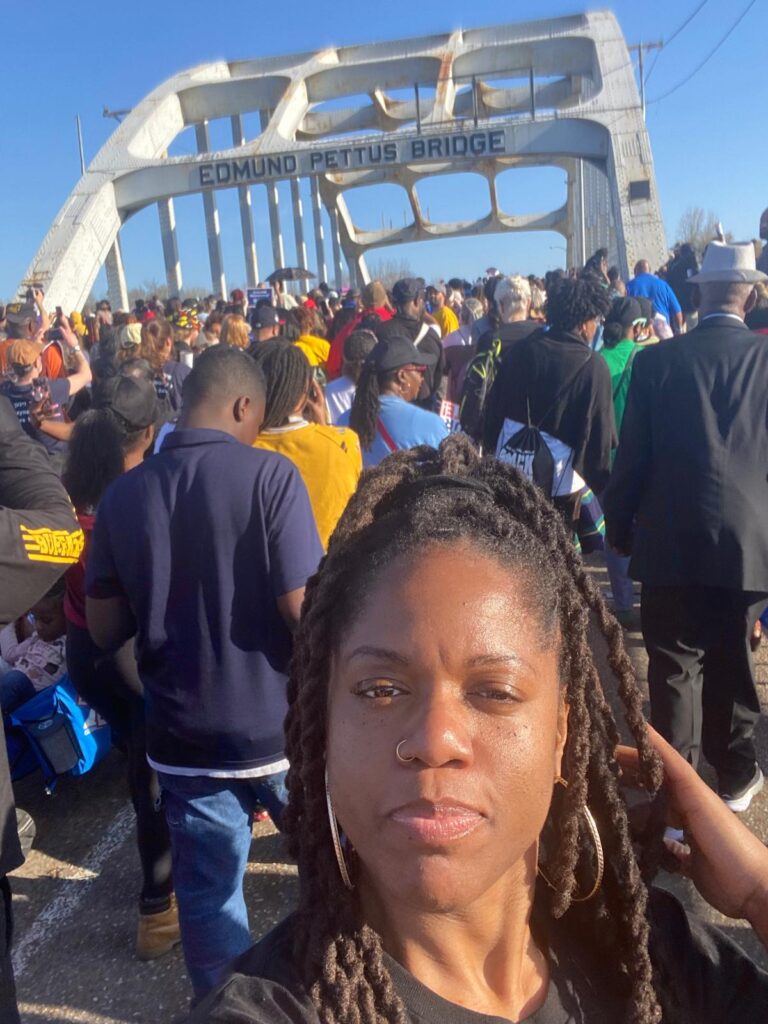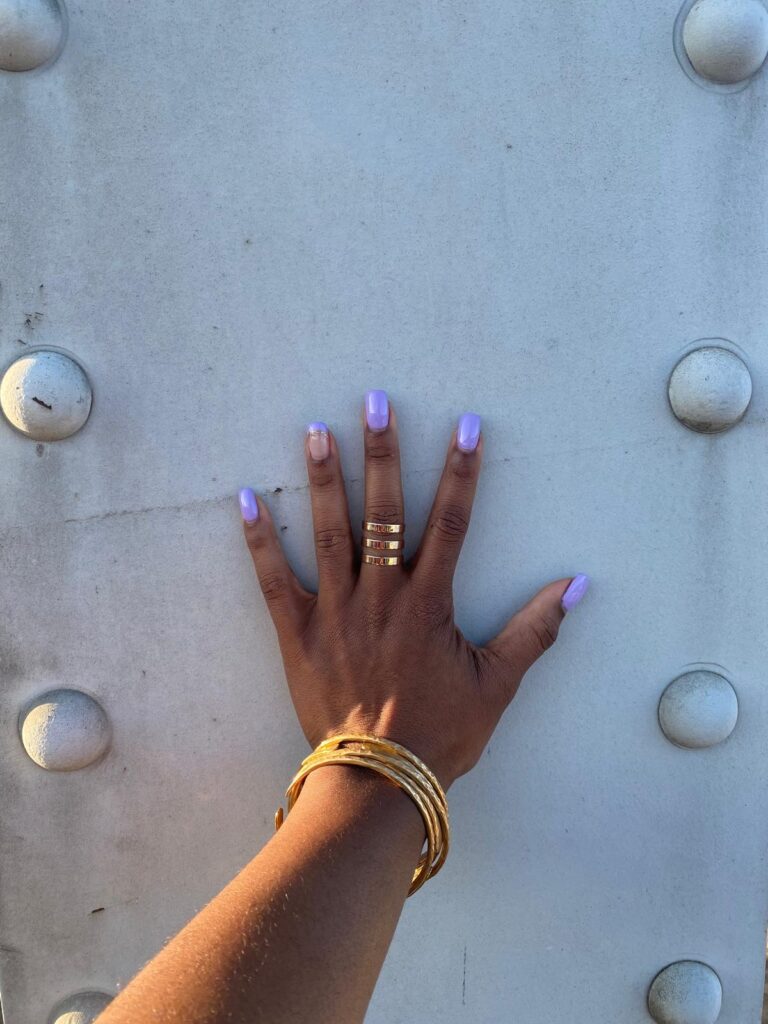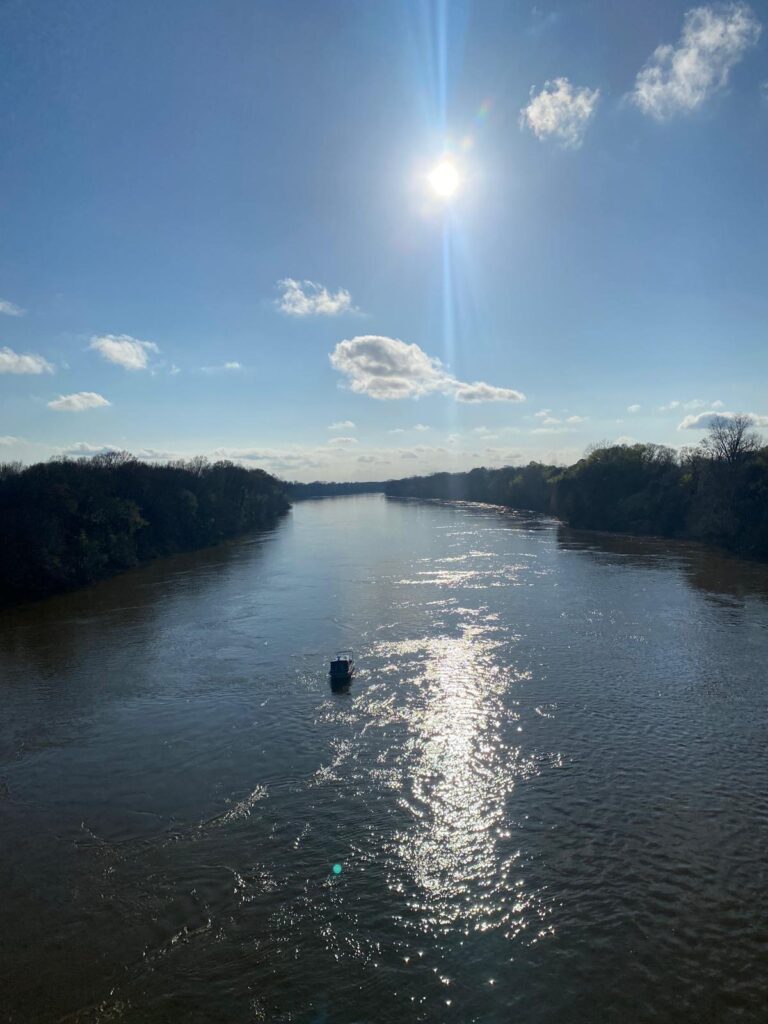Walking and Connecting in Selma, Alabama
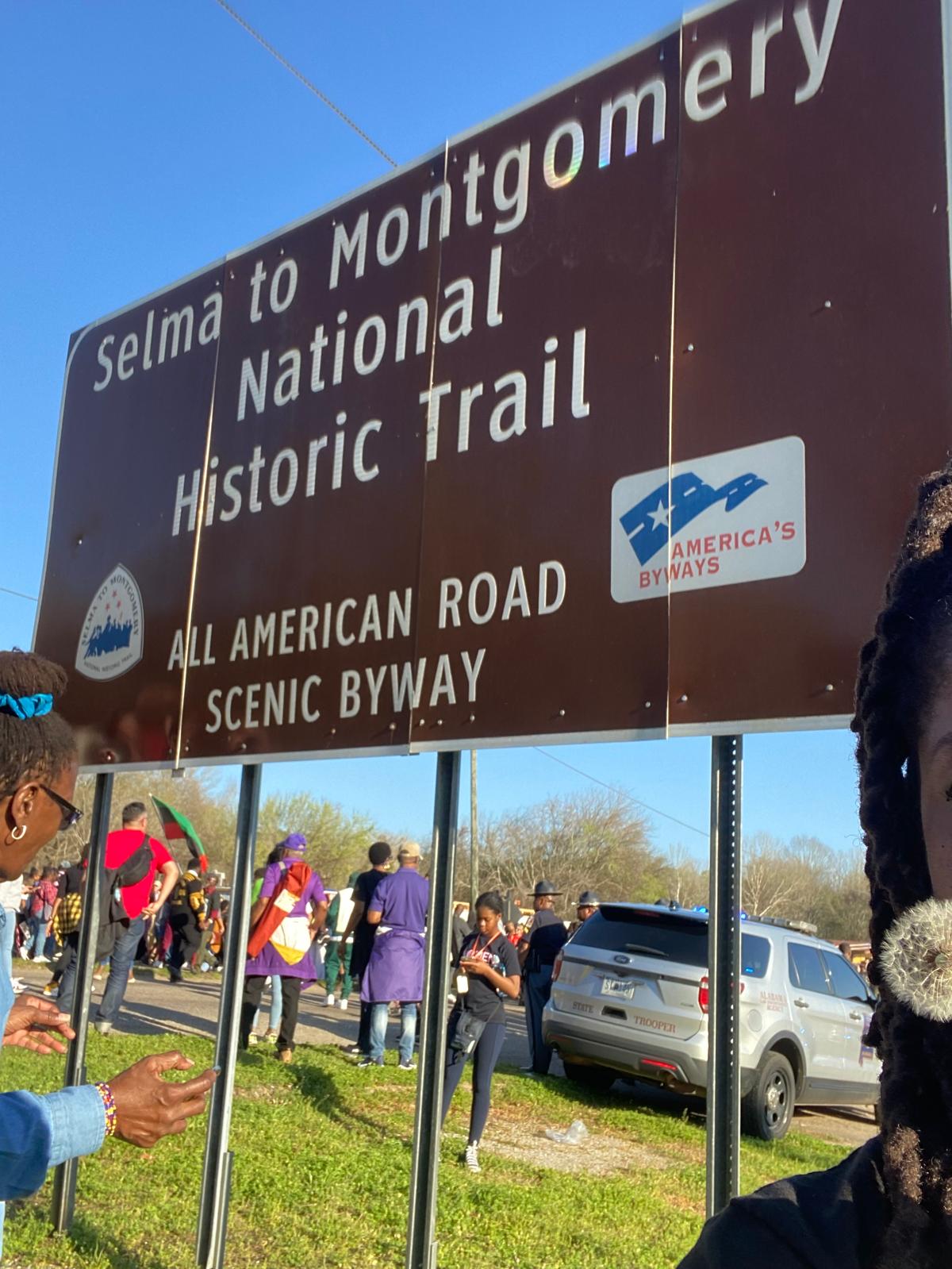
I used to walk around the park everyday, listening to GirlTREK’s Black History Bootcamp podcast. Out of of my mouth, I said I was going to work with them one day because our approach to teaching history is so similar. That was in 2020. Fast forward to 2023: I met Morgan, one of the co-founders of GirlTREK, and we became friends. Skip to March 2024: Morgan and Vanessa, GirlTREK’s two co-founders, invited me to Alabama to discuss working on a project together, participating in a parade with them, and crossing the bridge in Selma for the 59th anniversary of the Selma to Montgomery March.
A time was had. I enjoyed learning about GirlTREK, because all I knew was the podcast. I ain’t know they the largest health organization for Black women in this country. I ain’t know they had more than a million Black women walking for 30 minutes everyday, lowering their blood pressure, losing weight, curbing depression, then inviting other Black women to join ’em. Read their About page. And I was very impressed to learn they had divisions of employees, overwhelmingly most of whom are Black women who actually love their job.
I also enjoyed the parade in Selma, mainly because I’ma firm believer that to get a real good feel for a place, you gotta walk it. Whether that’s in ya own city or another, you can’t really “see” a neighborhood by driving through it; you gotta walk it. That’s what the parade allowed us to do. I even ran into Justin Burrell, who went kinda viral for describing his hometown in Gee’s Bend as “half country, half HUUD.”
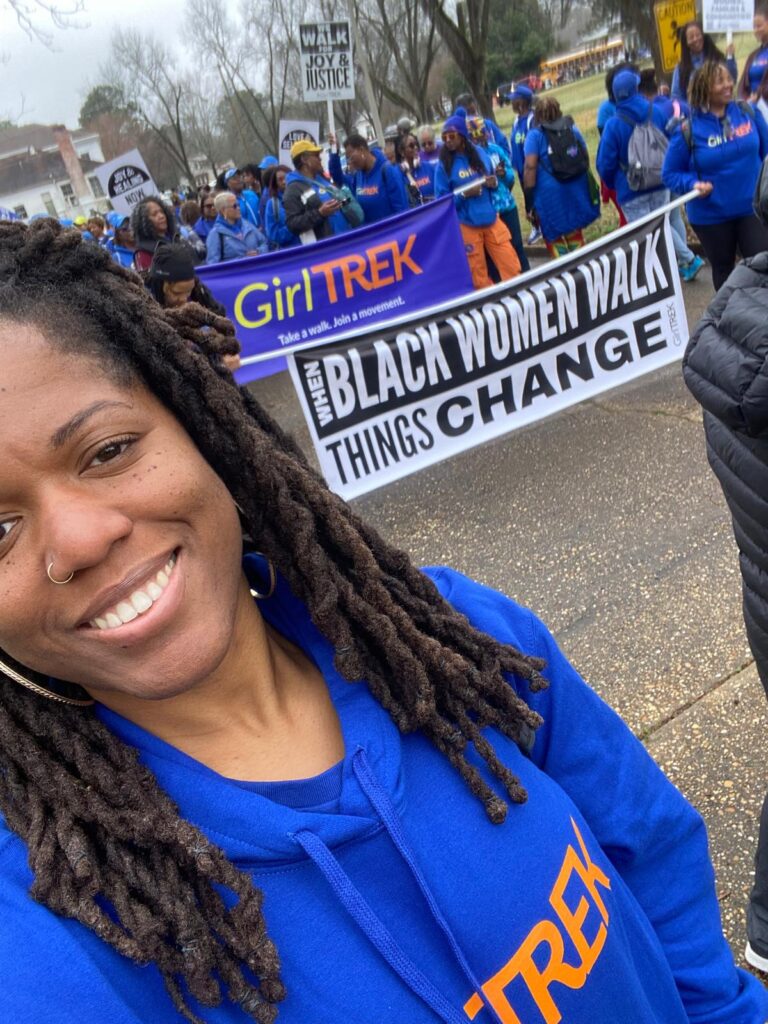
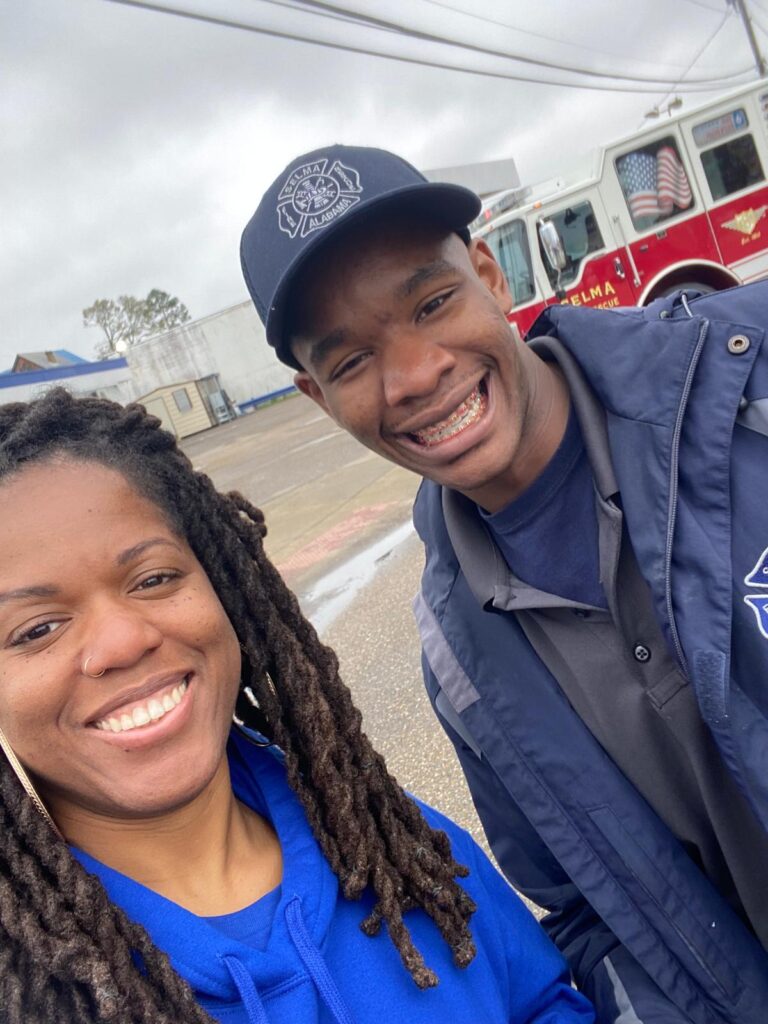
And I was reminded that it’s so easy to forget about the day-to-day movers and shakers once there’s a big name to latch onto. In this case, Martin Luther King, Jr.’s involvement in the Selma march took over everybody else’s name. I knew about Amelia Boynton Robinson’s contribution to the march, but I didn’t know about Margaret Jones Moore. I honestly still don’t know much, but I saw her marker and while reading it, her children walked up to tell me about their mother. That’s who’s in the picture.
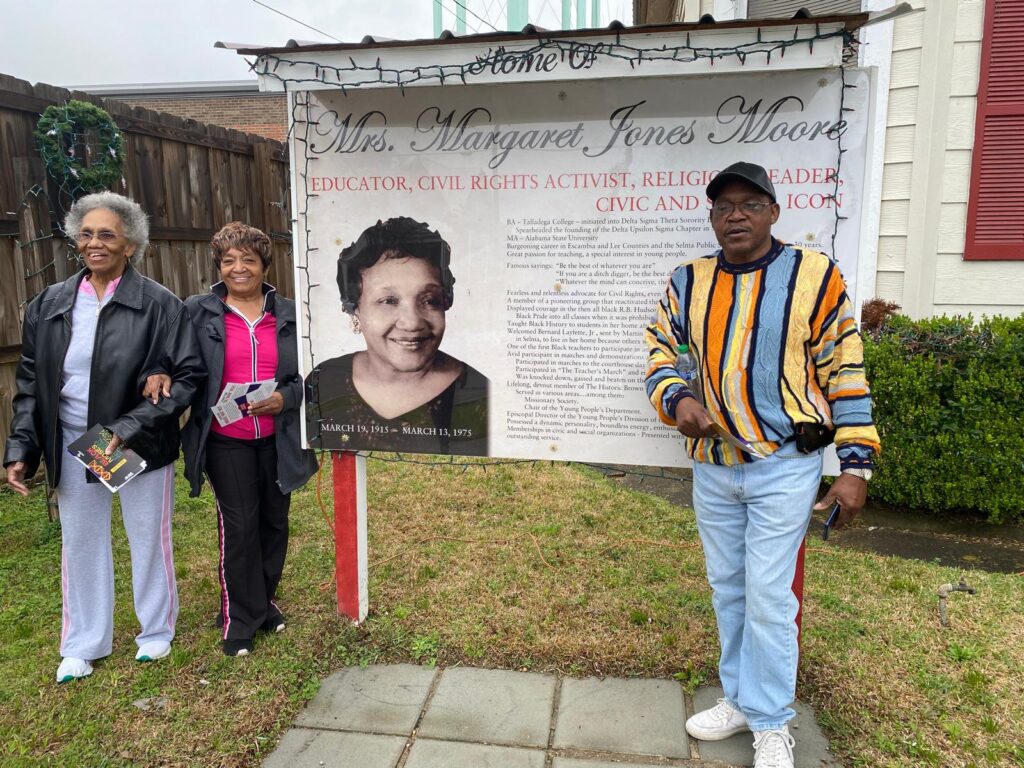
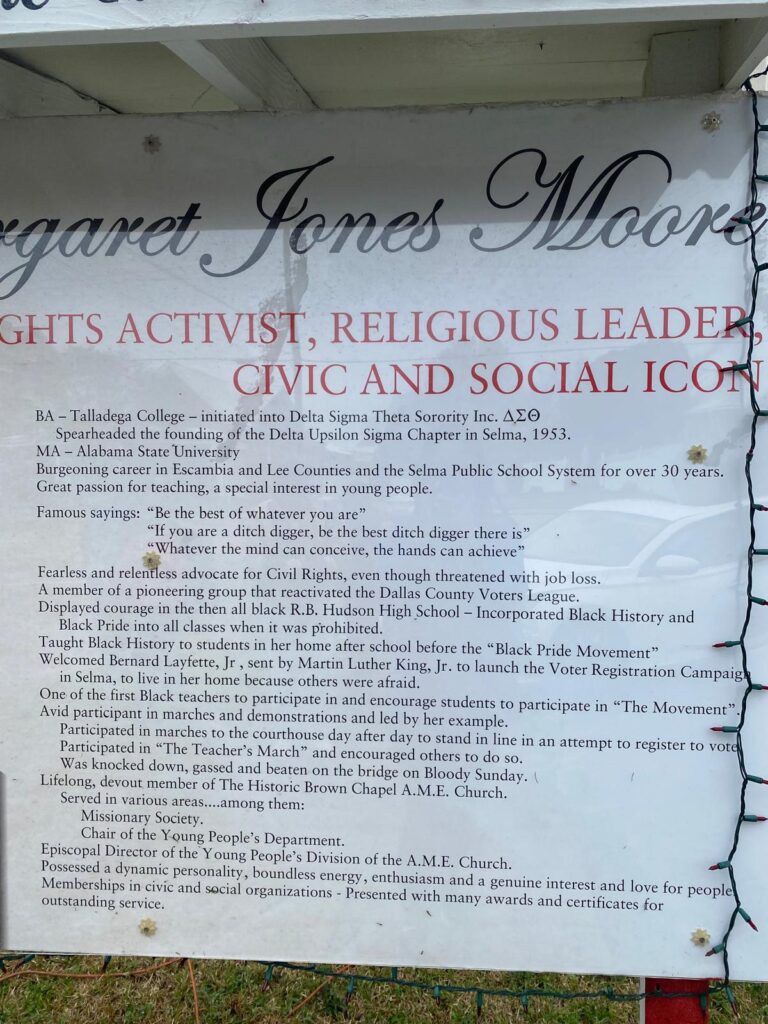
I knew that Amelia Boynton Robinson, A Geechee woman from Savannah, moved to Selma as an adult and got involved in the movement. She asked Dr. Martin Luther King, Jr. to come to Selma to help in their fight for Civil Rights. He agreed and set up a Southern Christian Leadership Conference (SCLC) headquarters in Amelia’s home. That’s exactly where they planned the Selma to Montgomery March.
On March 7, 1965, Amelia and almost 600 people (including Rosa Parks, Ralph Abernathy, Coretta Scott King, etc.) gathered at a church in Selma and began their 54-mile walk from Selma to Montgomery. Read our post about Amelia Boynton Robinson here. The march was led by John Lewis and Rev. Hosea Williams (whose work in Savannah is discussed in Krak Teet). Fun fact: John Lewis started a project called The Civil Rights History Project. While interning at the Library of Congress, I worked on it. I later worked part-time job at Delta (for free flights) and would see Congressman John Lewis all the time. I told him how I helped with the project. The first couple times I ran into him, he didn’t remember me so I’d explain all over again. The third time, though, I asked if he remembered me and he recounted the story!
So on March 3rd, beaucoup people from around the country gathered in Selma to commemorate that bloody bridge crossing backing ’65. After learning VP Kamala Harris speak, we made our way across the bridge. Before we got up there, I asked my GirlTREK crew what they were crossing into. Like, what are you personally claiming once you reach the other side? For me, it was more courage to do what ain’t easy but is necessary. And the whole trip reminded me that walking is transformative—was back then and still is today.
